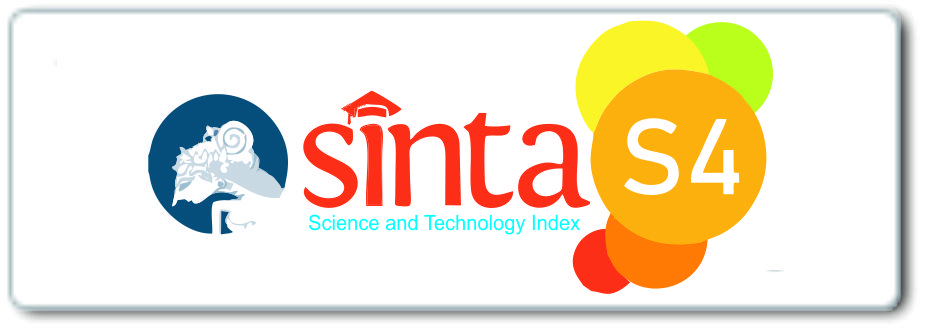The enrichment of Kelulut (Trigona spp.) feeding plants for its sustainability in mangrove ecotourism Beras Basah Village, Langkat Regency, North Sumatra, Indonesia
DOI:
https://doi.org/10.32734/jst.v8i1.21340Keywords:
Kelulut (Trigona spp), Trigona feed source, Mangrove Ecotourism Beras Basah VillageAbstract
The cultivation of Trigona honey bees by the "Kelompok Tani Peduli Pesisir" (Coastal Care Farmer Group) has strong potential for rapid development due to the abundant availability of food plants that support the life of kelulut bees (Trigona spp.), particularly from home gardens in mangrove areas. The diversity of plant species is crucial for ensuring a steady supply of nectar, pollen, and resin, which directly impacts honey production. However, limited community knowledge about suitable plant species and the lack of plant variety pose challenges to sustainable Trigona spp. beekeeping. This community service initiative aims to introduce potential food sources for kelulut bees and provide plants to enrich the variety of feed sources, ensuring availability year-round. Activities include 1) preparing plant materials and planting media, 2) planting fruit trees, and 3) conducting educational outreach. As a result, farmers’ knowledge and the diversity of beneficial perennial plants such as mango (Mangifera indica), jackfruit (Artocarpus heterophyllus), and water apple (Syzygium aqueum) have increased, contributing to the sustainable development of Trigona spp. bee cultivation.
Downloads
References
S. Harjanto, M. Mujianto, Arbainsyah, A. Ramlan, Budidaya Lebah Madu Kelulut Sebagai Alternatif Mata Pencaharian Masyarakat, [Kelulut Honey Bee Cultivation as an Alternative Livelihood for the Community], Goodhope Asia Holdings Ltd, Environmental Leadership & Training Initiative (ELTI), Tropenbos Indonesia dan Swaraowa, 2020.
M. Basyuni, A. Mubaraq, A.A. Aznawi, I. Sivaipram, E.S. Siregar, N. Sulistiyono, “Kelulut (Trigona spp) cultivation to increase production and additional income of mangrove ecotourism Peduli Pesisir Farmer Groups, Beras Basah Village, Pangkalan Susu Sub-District, North Sumatra, Indonesia”, Journal of Community Services: Sustainability and Empowerment, vol.04, no. 02, pp. 1–11. 2024.
B.F. Bartelli, F.H. Nogueira-Ferreira, “Pollination services provided by Melipona quadrifasciata Lepeletier (Hymenoptera: Meliponini) in greenhouses with Solanum lycopersicum L. (Solanaceae)”, Sociobiology, vol. 61, no. 4, pp. 510–516. 2014.
M.A.I. Al-Hatamleh, J.C. Boer, K.L. Wilson, M. Plebanski, R. Mohamud, M.Z. Mustafa, “Antioxidant-based medicinal properties of stingless bee products recent progress and future directions”, Biomolecules, vol. 10, no. 923, pp. 1–28. 2020.
N.A. Zulkifli, Z. Hassan, M.Z. Mustafa, W.N.W. Azman, S.N.H. Hadie, N. Ghani, A.A. Mat Zin, “The potential neuroprotective effects of stingless bee honey”, Frontiers in Aging Neuroscience, vol. 14, no. 2, pp. 1–18. 2023.
P. Vit, D.W. Roubik, S.R.M. Pedro (Ed.), Pot-Honey: A legacy of stingless bees. In Pot-Honey: A Legacy of Stingless Bees, Springer Science & Business Media, 2013.
P. Rosawanti, N. Hidayati, H. Hariyadi, N. Hanafi, B. Iskandar, “Pemberdayaan masyarakat dengan budidaya pakan lebah dan pemanenan madu kelulut”, [Community empowerment with bee forage cultivation and kelulut honey harvesting], SELAPARANG: Jurnal Pengabdian Masyarakat Berkemajuan, vol. 6, no. 3, p. 1082, 2022.
B. Rahmad, N. Damiri, Z. Hanafiah, D. Adriani, L. Hanum, “Food source diversity and honey production in stingless bee meliponiculture, Ogan Komering Ulu Timur, South Sumatra, Indonesia”, Biodiversitas, vol. 25, no. 6, pp. 2747–2756, 2024.
F.G.B. Bueno, L. Kendall, D.A. Alves, M.L.Tamara, T. Heard, T. Latty, R. Gloag, “Stingless bee floral visitation in the global tropics and subtropics”, Global Ecology and Conservation, vol. 43, no. 3, p. e02454, 2023.
H.F. Abou-Shaara, “Availability of nectar and pollen sources for honey bees in Oman”, Journal of Agricultural Sciences, vol. 10, pp. 1–2, 2019.
E. Wahyuningsih, M. Syaputra, P.K. Suparyana, I.P.A.T. Maya, A.T. Lestari, “Identifikasi diversitas sumber pakan lebah berbasis lahan pekarangan pada meliponikultur”, [Identification of bee forage sources diversity based on home garden in meliponicultural], Jurnal Penelitian Hutan Tanaman, vol. 19, no. 1, pp. 29–44, 2022.
M.S. Salleh, M. F. Yunus, A. Ahmad, “Integrated farming of stingless bee and pesticide-free chilli fertigation: sharing experience from Knowledge Transfer Project (KTP-RIGS) with Persatuan Anak Kuantan Utara and organic farm venture”, Revelation and Science, vol. 1, no. 1, pp. 71–79. 2023.
Ministry of Environment and Forestry of Republic Indonesia. Success In Kelulut Honey Beekeeping (Trigona Sp.) “A Story from Forest Outskirts” (First). Directorate of Peat land Degradation Control. 2022.
N.A. Zariman, N.A. Omar, A.N. Huda, “Plant attractants and rewards for pollinators: their significant to successful crop pollination”, International Journal of Life Sciences and Biotechnology, vol. 5, no. 2, pp. 270–293, 2022.
A.M. Fikri, M. Popova, A. Sulaeman, V. Bankova, “Stingless bees and mangifera indica: A close relationship? Indian Journal of Natural Products and Resources”, vol. 11, no. 2, pp. 130–134. 2020.
M. Sánchez, A.C. Abreu, A.I. Tristán, Y. Velásquez, I. Fernández, J. Cuevas, “Floral attractants and rewards to pollinators in Mangifera indica L.,” Scientia Horticulturae, vol. 332, no. 4, 2024.
Y. Pujiastuti, W. Herlin, A. Meilin, “Variation of plant species as feed sources in honey beekeeping in Jambi and South Sumatera Indonesia”, IOP Conference Series: Earth and Environmental Science, vol. 1346, no. 1, 2024.
U. Layek, N. Das, S. Kumar De, P. Karmakar, “The botanical origin of cerumen and propolis of Indian stingless bees (Tetragonula iridipennis Smith): pollen spectrum does not accurately indicate latex and resin sources”, Apidologie, vol. 54, no. 2, 2023.
S.K.I. Rahmadani, R.A.S. Adriafirna, E.N.M. Rohmah, D. Atasa, “Improving farmer knowledge on the use of subsidized and nonsubsidized fertilizers in Sukoanyar Village, Turi Subdistrict, Lamongan Regency”, JATI EMAS (Jurnal Aplikasi Teknik dan Pengabdian Masyarakat), vol. 8, no. 3, pp. 27–32. 2024.
E. Raji, T.I. Ijomah, O.G. Eyieyien, “Improving agricultural practices and productivity through extension services and innovative training programs”, International Journal of Applied Research in Social Sciences, vol. 6, no. 7, pp. 1297–1309, 2024.
Downloads
Published
How to Cite
Issue
Section
License
Copyright (c) 2025 Journal of Saintech Transfer

This work is licensed under a Creative Commons Attribution-ShareAlike 4.0 International License.















